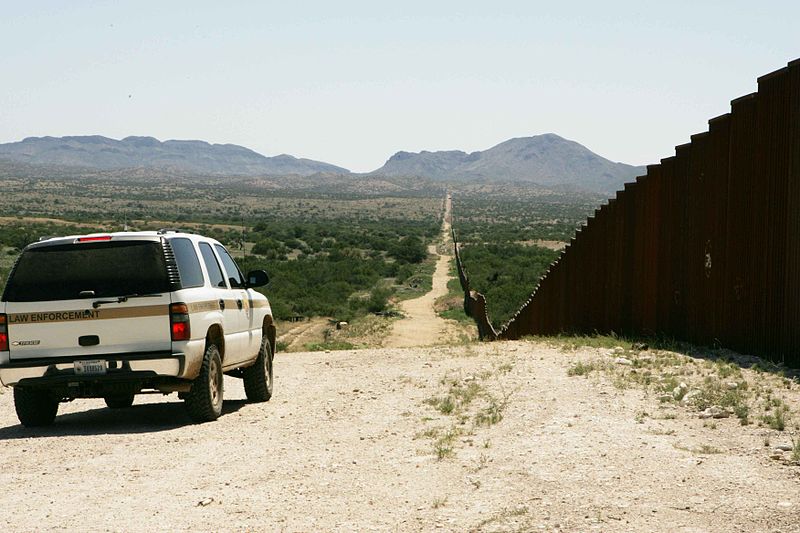Mexico continues to encourage its citizens to migrate to the U.S., even thought it doesn’t need to.
by Victor Davis Hanson // National Review Online
There are many strange elements in the current debate over illegal immigration, but none stranger than the general failure to discuss the role of Mexico.
Are millions of Mexican citizens still trying to cross the U.S. border illegally because there is dismal economic growth and a shortage of jobs in Mexico?
Not any more. In terms of the economy, Mexico has rarely done better, and the United States rarely worse.
The Mexican unemployment rate is currently below 5 percent. North of the border, it remains stuck at over 7 percent for the 53rd consecutive month of the Obama presidency. The American gross domestic product has been growing at a rate of less than 2 percent annually. In contrast, a booming Mexico almost doubled that in 2012, with its GDP growing at a robust clip of nearly 4 percent.
Is elemental hunger forcing millions of Mexicans to flee north, as it may have in the past?
Not necessarily. According to a recent United Nations study, an estimated 70 percent of Mexico’s citizens are overweight and suffer from the same health problems caused by poor diet and lack of exercise shared by those in other, more affluent Western societies.
Mexico is a severe critic of U.S. immigration policy, often damning Americans as ruthlessly insensitive for trying to close our border. The Mexican government has gone so far as to join lawsuits against individual American states to force relaxation of our border enforcement. Former Mexican president Felipe Calderón sharply criticized the United States for trying to “criminalize migration.”
Is Mexico, then, a model of immigration tolerance?
Far from it.
Until 2011, when it passed reforms, Mexico had among the most draconian immigration laws in the world. Guatemala has criticized Mexico for initiating construction of a fence along its southern border.
Mexico has zero tolerance for illegal immigrants who seek to work in Mexico, happen to break Mexican law, or go on public assistance — and zero tolerance for any citizens who aid them.
In Mexico, legal immigration is aimed at privileging new arrivals who have skill sets that will aid the Mexican economy and, according to the country’s immigration law, who have the “necessary funds for their sustenance” — while denying entry to those who are not healthy or would upset the “equilibrium of the national demographics.” Translated, this apparently means that Mexico tries to withhold legal residency from those who do not look like Mexicans or do not have the skills needed to make money.
If the United States were to treat Mexican nationals in the same way that Mexico treats Central American nationals, there would be humanitarian outrage.
In 2005, the Mexican government published a Guide for the Mexican Migrant — in comic-book form. The pictographic manual instructed the country’s own citizens on how best to cross illegally into, and stay within, the United States. Did Mexico assume that its departing citizens were both largely illiterate and unworried about violating the laws of a foreign country?
Yet Mexico counts on these expatriate poor to send back well over $20 billion in remittances annually – currently the third-largest source of foreign exchange for Mexico.
Remittances from America fill a void that the Mexican government has created by not extending the sort of housing, education, or welfare help to its own citizens that America provides to foreign residents.
In truth, many thousands of Mexicans flee northward not necessarily because there are no jobs at home, or because they are starving there. America offers them far more upward mobility and social justice than does their own homeland. And for all the immigration rhetoric about race and class, millions of Mexicans vote with their feet to enjoy the far greater cultural tolerance found in the U.S.
Indigenous people make up a large part of the most recent wave of Mexican arrivals. Those who leave provinces like Oaxaca or Chiapas apparently find the English-speaking, multi-racial U.S. a fairer place than the hierarchical and often racially stratified society of Mexico.
People should be a nation’s greatest resource. Fairly or not, Mexico has long been seen to view its own citizens in rather cynical terms as a valuable export commodity, akin to oil and food. When they are young and healthy, Mexican expatriates are expected to scrimp, save, and support their poorer relatives back in Mexico. When these Mexican expats are ill and aged, then the U.S should pick up the tab for their care.
The current problem for Mexico is that the U.S. might soon deal with illegal immigration in the wayMexico does. But for now, to the extent that Mexican citizens can potentially make, rather than cost, Mexico money, there is little reason for our southern neighbor to discourage them from leaving the country — by hook, crook, or comic book.
NRO contributor Victor Davis Hanson is a senior fellow at the Hoover Institution. His latest book is The Savior Generals, published this spring by Bloomsbury Books.

